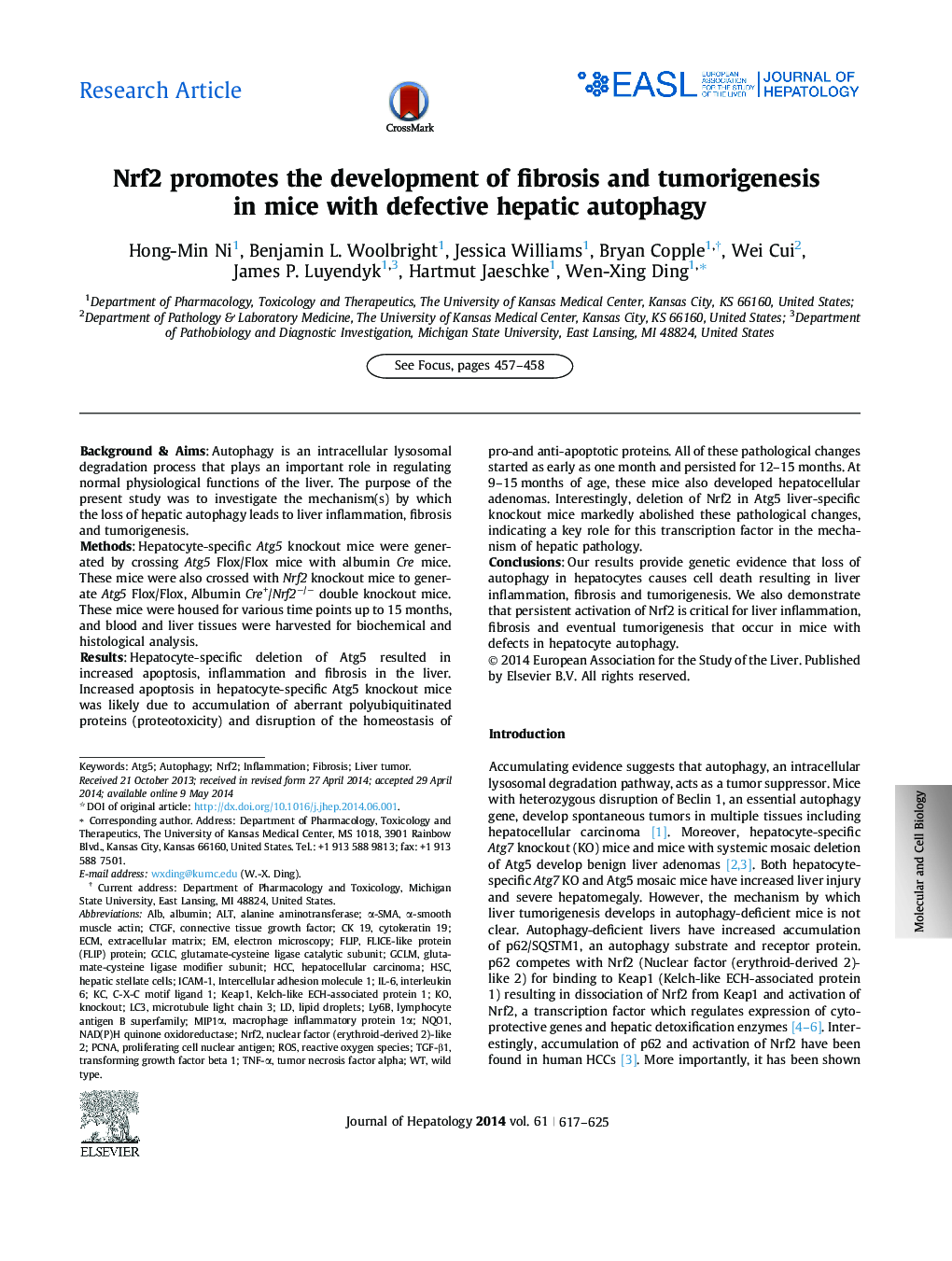| Article ID | Journal | Published Year | Pages | File Type |
|---|---|---|---|---|
| 6103266 | Journal of Hepatology | 2014 | 9 Pages |
Background & AimsAutophagy is an intracellular lysosomal degradation process that plays an important role in regulating normal physiological functions of the liver. The purpose of the present study was to investigate the mechanism(s) by which the loss of hepatic autophagy leads to liver inflammation, fibrosis and tumorigenesis.MethodsHepatocyte-specific Atg5 knockout mice were generated by crossing Atg5 Flox/Flox mice with albumin Cre mice. These mice were also crossed with Nrf2 knockout mice to generate Atg5 Flox/Flox, Albumin Cre+/Nrf2â/â double knockout mice. These mice were housed for various time points up to 15Â months, and blood and liver tissues were harvested for biochemical and histological analysis.ResultsHepatocyte-specific deletion of Atg5 resulted in increased apoptosis, inflammation and fibrosis in the liver. Increased apoptosis in hepatocyte-specific Atg5 knockout mice was likely due to accumulation of aberrant polyubiquitinated proteins (proteotoxicity) and disruption of the homeostasis of pro-and anti-apoptotic proteins. All of these pathological changes started as early as one month and persisted for 12-15Â months. At 9-15Â months of age, these mice also developed hepatocellular adenomas. Interestingly, deletion of Nrf2 in Atg5 liver-specific knockout mice markedly abolished these pathological changes, indicating a key role for this transcription factor in the mechanism of hepatic pathology.ConclusionsOur results provide genetic evidence that loss of autophagy in hepatocytes causes cell death resulting in liver inflammation, fibrosis and tumorigenesis. We also demonstrate that persistent activation of Nrf2 is critical for liver inflammation, fibrosis and eventual tumorigenesis that occur in mice with defects in hepatocyte autophagy.
